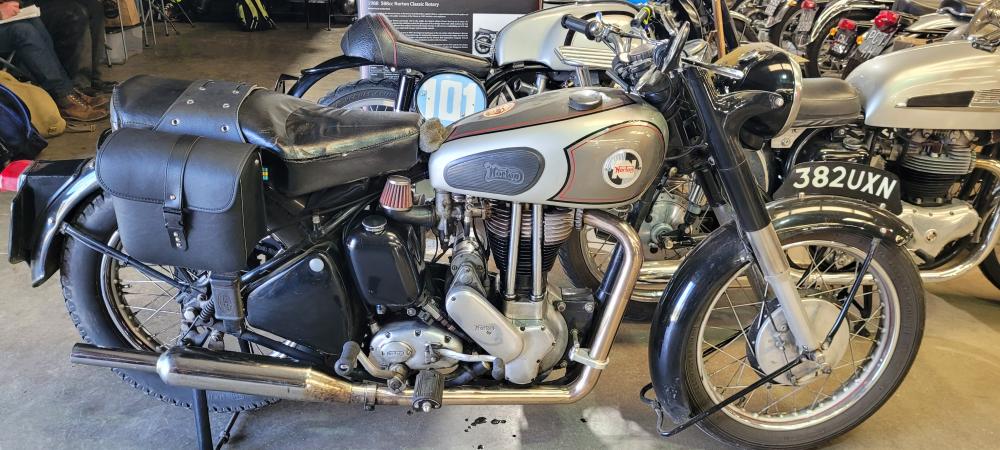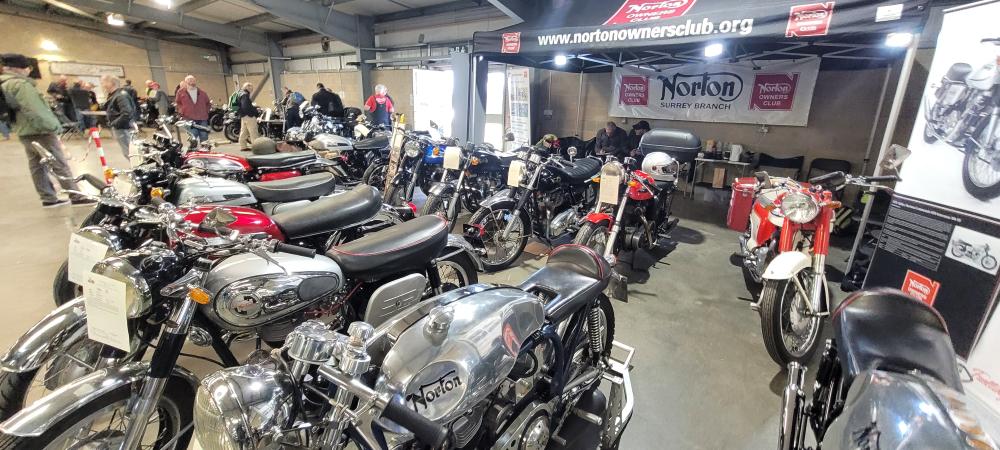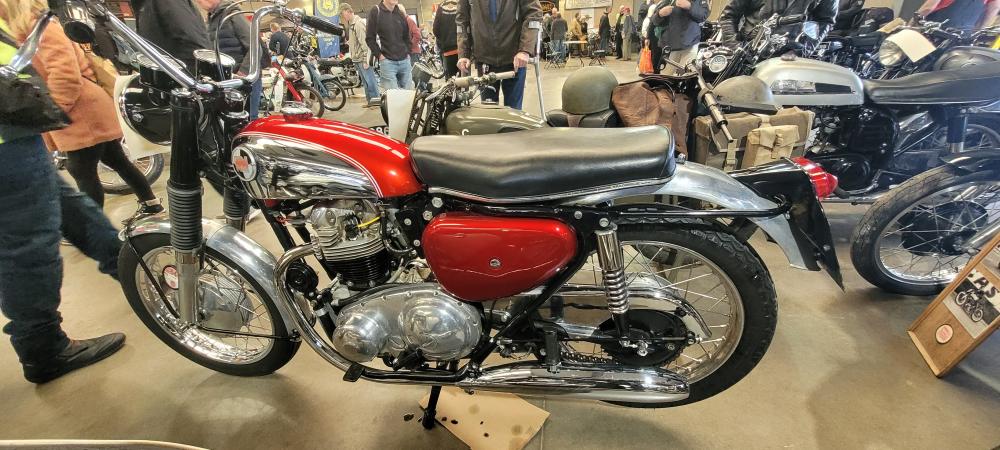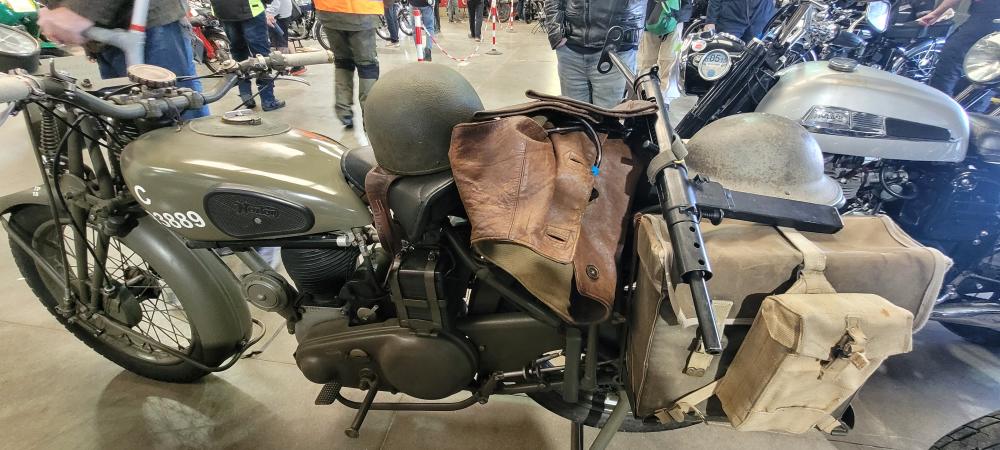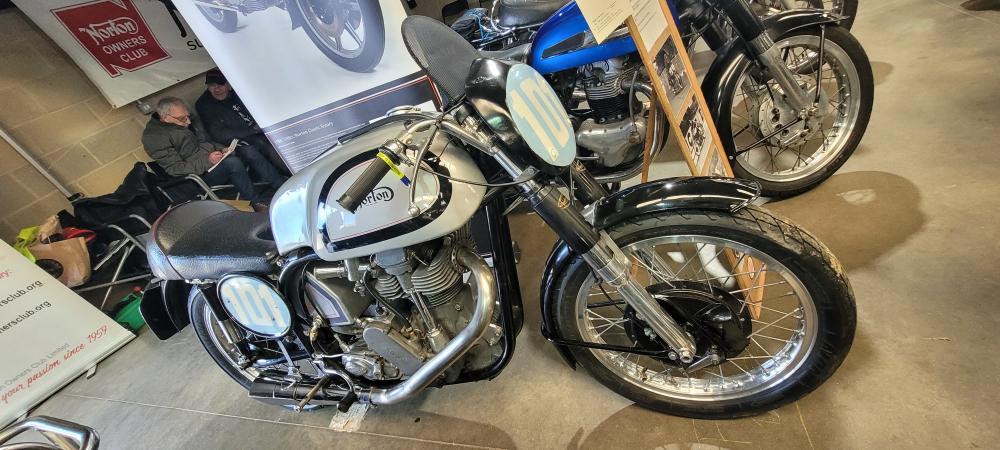| More about the Norton Interpol |
|
Detailed information about the police version of the Commando |
Designed by Neale Shilton specifically for the police in home and export markets, the Interpol is one model that nearly didn’t get made, but went on to become one of the longest running Commando models. It was unveiled in 1969 and produced from 1970 to the end in 1976. Based mainly around standard machines with some special parts, its trade-mark was the white paintwork and addition equipment for police work, including fairing, tank, seat, lights and horns.
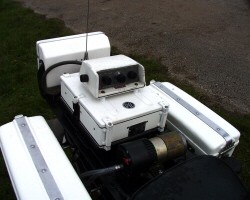 |
| Westminster radio as fitted to Lancashire Constabulary Interpol |
Although the Interpol model appeared in Norton’s sales literature, spares lists and repair manuals, the very nature of its work for the police meant that almost every batch was different due to customer options. Similarly, not all that you see was actually completed in the factory. Norton made the machine with the appropriate tank and single seat, minus headlight brackets, and finished it in white (or in the black option). Sometimes they fitted the fairing (if it were having one), but this, like other additional equipment could be added by the customer or to the customers requirements by an outside specialist.
Extra equipment could include the fairing (if not factory fitted), panniers, top box and the hardware to mount the radio or auxiliary equipment. New lights, horns and signs could be fitted but the police sometimes saved costs by refurbishing and reusing serviceable items from withdrawn machines. All or any of the work could be performed by an outside firm or by the police mechanics.
Early versions started out with a modified Atlas tank (in one of four variants to accommodate the radio) and an Avon fairing. Later, the Norton Northway fairing was designed, and Craven panniers were generally fitted. For 1971/72, a unique set of exhaust pipes allowed the Interpol to use the new, normally upswept, reverse cone silencers at a low level to suit to fitting of panniers. Later machines used standard systems. At the same time, disc brakes became available, either factory fitted or as a conversion kit for the user, and in part, accounted for the Interpol having its own unique set of handlebars for a few seasons.
With the introduction of the Interstate and its improvements, the machine benefited by having a longer range and better stopping power. With the new tank came a revised seat, but, more importantly, came the general shift to rear mounting of all the radio equipment, something that was pioneered by Lancashire Constabulary a few years earlier. The rear mounting of the radio and control unit meant it was safer for the rider in an accident involving going over the tank.
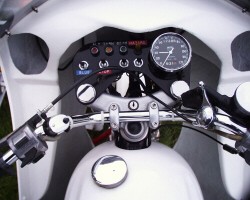 |
| Interpol front end |
Police forces still took delivery of vehicles with fork gaiters and/or shrouded rear units, after they were dropped from the other models. They helped to reduce the effects of the weather and eased the cleaning of machines in use all year round. Other styles of fairings, panniers and signs appeared. From about 1973, the fibreglass add-ons were slightly re-designed, giving a more rounded look in keeping with the Interstate style.
Fairings had in-built indicator mounts now, Craven had a new design of pannier, and Avon produced panniers as well as fairings. The front mudguard widened to accommodate the now standard 4.10 x 19 TT100 tyre, but mudguards were also deeper on some police variants. It was also the year that 850cc production started and 750cc stopped.
In 1974, the UK County boundary changes meant re-arrangements to the corresponding police force boundaries. Many machines still covered the same 'patch', but were now part of a different police authority, each of which was setting new standards of uniformity and often required a change of radio equipment. Many forces standardised on a larger, non weather-proof radio as used in the cars, and that meant housing it in a fibreglass box on the rear of the machine. Often this meant that the 'police-stop' sign was also relocated or changed and coupled with redesigned traffic stripes and crests the bikes’ appearance changed considerably but the machine was mechanically the same.
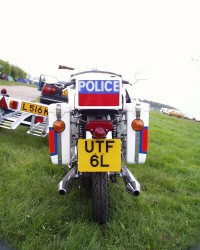 |
| Interpol rear view |
Various changes in the other Commando models were reflected in the Interpol, including the change from right to left hand gear change, an electric starter and adjustable Isolastic mounts.
By September 1975 the final form was reached and no more development done as the model was discontinued in 1976. CLP were making Avon fairings of a new design to suit the later Norton models, and most users were fitting the earlier style of panniers again.
By now police BMWs were appearing, kitted-out in the same style as the Interpol, prior to the introduction of the RT fairing. Finally, in 1977, money became available to fund development of a new rotary engined machine to become the Interpol 2.
© Gerry Scott

